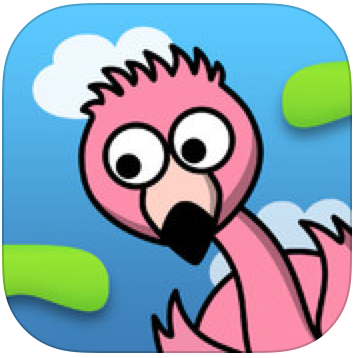Alljährlich lese ich die Einheit „Human Interface Guidlines for iOS“ im Rahmen der Vorlesung „Mobile Applications„. Anbei der Foliensatz:
Klicken Sie auf den unteren Button, um den Inhalt von www.slideshare.net zu laden.

Digitale Lehre an und rund um der Technischen Universität Graz
Alljährlich lese ich die Einheit „Human Interface Guidlines for iOS“ im Rahmen der Vorlesung „Mobile Applications„. Anbei der Foliensatz:
Klicken Sie auf den unteren Button, um den Inhalt von www.slideshare.net zu laden.
Über die kollaborative Zeichenapp hatte ich schon hier berichtet, jetzt darf ich auch noch die Präsentation der Masterarbeit von Michael vorstellen. Er hat natürlich erfolgreich bestanden 🙂
Klicken Sie auf den unteren Button, um den Inhalt von www.slideshare.net zu laden.
Our contribution about „Polling with Mobile Devices on University Campus“ is now published in the new book „Advances in Communications and Media Research„.
Abstract:
Mobile devices have become ubiquitous in our daily lives, and they can be used in novel ways to improve or enhance existing use cases and offer new solutions for unsolved problems. One such use case is performing studies, questionnaires and polls. With their unique capabilities and sensors, mobile devices nowadays can contribute to those fields and even offer new ways of data analysis and methodologies.
The combination of technologies in just one device, namely the touchscreen, sensors, web-connectivity and build in GPS tracking, make them a perfect tool for different scenarios and contexts. Some of those, in particular touch-screen technology, can be found in the literature about computer assisted questionnaires and interviews, where the technology was found feasible and in a large number of cases even better accepted as classical methodologies like paper-and-pen questionnaires.
Drawing from those experiences, and with current trends in mobile development in mind, a prototype application for conducting interviews and questionnaires is developed. The main research question is, how the conjunction of automatically tracked geolocation data and questionnaires can be used in a scenario that examines quality of life on campuses across the university. By creating a heat map of location and questionnaire answers, dependencies can be visualized, making them easily detectable. It can be concluded that with the help of mobile devices questionnaires can be enhanced in an implicit way to give a deeper insight in dependencies according to the local places the questionnaires are happening (in our special case on university campus).
Polling with Mobile Devices on University Campus by Martin
Klicken Sie auf den unteren Button, um den Inhalt von www.scribd.com zu laden.
Reference: Andrasec, D., Ebner, M., Ebner, T. (2014) Polling with Mobile Devices on University Campus. Stavros, A.V. (ed.). Advances in Communications and Media Research. Nova Publisher, pp. 99-118
 Im Rahmen unserer Vorlesung „Mobile Applications 2014“ ist das Spiel Falling Flamingo entstanden. Also nicht nur, dass es schwer ist den Flamingo durch die Levels zu bringen, nein man darf auch noch mathematische Aufgaben lösen – also dann mal los 🙂
Im Rahmen unserer Vorlesung „Mobile Applications 2014“ ist das Spiel Falling Flamingo entstanden. Also nicht nur, dass es schwer ist den Flamingo durch die Levels zu bringen, nein man darf auch noch mathematische Aufgaben lösen – also dann mal los 🙂
Falling Flamingo Math ist ein iOS Spiel, welches dir dabei hilft deine Fähigkeiten im Kopfzurechnen spielerisch zu verbessern.
Du kannst zwischen 4 Schwierigkeitsgraden und 6 Charakteren wählen. Jeder Charakter hat unterschiedliche Eigenschaften. Das Ziel des Spiels ist es so lange wie möglich am Leben zu bleiben, indem du deinen Charakter durch die Plattformen nach unten navigierst und versuchst die Fragen richtig zu beantworten. Aber pass auf die Items auf! Manche Items helfen dir weiter zu kommen, aber andere machen dir das Leben schwer. Viel Spaß beim Spielen, Teilen und Herausfordern deiner Freunde via GameCenter.
Denis Andrasec hat sich in seiner Masterarbeit mit Umfragen auf mobilen Endgeräten befasst und dabei auch eine eigene iPad-App programmiert mit der im Feld die Daten erfassen kann.
Hier die Folien seiner Abschlusspräsentation:
Klicken Sie auf den unteren Button, um den Inhalt von www.slideshare.net zu laden.
Benedikt Kienleitner hat in seiner Masterarbeit die Buchstabenpost umgesetzt und damit einen tollen Beitrag für die Kollaboration mit mobilen Devices für Schulkinder geleistet.
Hier ist auch noch die Präsentation seiner Masterarbeit:
Klicken Sie auf den unteren Button, um den Inhalt von www.slideshare.net zu laden.
Our publication about „Development of a Collaborative Learning Game Using External Plastic Cards as an Input Device on an iPad“ in the International Journal of Interactive Mobile Technologies (iJIM) is now published.
Abstract:
This paper evaluates and describes the usage of plastic cards, coated with conductive paint, as an input device for capacitive touchscreens. By using the developed card prototypes it should be proofed, that usage of this new kind of input device can be handled by primary school pu- pils in a collaborative learning game. For this reason an educative digital learning game has been developed which can be controlled by the card prototypes. The game asks questions of general knowledge and the answer can be given by putting the proper plastic card on the touchscreen.
The evaluation of the game by two groups of four children pointed out, that the cards can be easily used to identify a specific user. Although evaluation shows that the card con- trol has weaknesses to reliably detect the correct answer during the game phase. All pupils enjoy to play the game and they additionally state, that they like the usage of the cards.
Beside the problems with a reliable card recognition the evaluation shows that the collaborative concept of the game is promising due to the fact that the pupils are always work- ing together on finding a solution for the answer. Further they support each other in handling and understanding the plastic cards which leads to a deeper understanding of the technical backgrounds.
[Link to the full article (logged in mode only)]
Reference: Lexow, S., Ebner, M. (2014) Development of a Collaborative Learning Game Using External Plastic Cards as an Input Device on an iPad, International Journal of Interactive Mobile Technologies (iJIM), Vol. 8, Nr. 2, p. 12-17
Im Rahmen der Vorlesung „Mobile Applications“ (mit Schwerpunkt auf iOS) darf ich mich auch heuer wieder um den Bereich Usability & HCI kümmern. Hierzu meine Folien zur Lehrveranstaltung die im Wesentlichen auf diesem Dokument basieren:
Klicken Sie auf den unteren Button, um den Inhalt von www.slideshare.net zu laden.
 Ab sofort ist auch die iPhone App für den PlusMinus-Trainer online verfügbar. Nach der Webapplikation und der Android-App kann der Trainer jetzt auch am iPhone verwendet werden:
Ab sofort ist auch die iPhone App für den PlusMinus-Trainer online verfügbar. Nach der Webapplikation und der Android-App kann der Trainer jetzt auch am iPhone verwendet werden:
Die App beinhaltet ein webbasiertes Trainingssystem für das du ein Konto benötigst. Dein Lernfortschritt wird online gespeichert, und du bekommst immer auf dich zugeschnittene Rechenaufgaben.
Weiters gibt es einen Übungsmodus der in unterschiedlichen Schwierigkeitsstufen anonym durchführbar ist, und dem Zwecke der Verbesserung der Rechenfähigkeiten des Benutzers dient.
Ein Account kann bei https://mathe.tugraz.at angelegt werden.
For our lecture on „Mobile Applications“ I did a lecture on „Human Interface Guidelines for Mobile Applications„. Here are the slides:
Klicken Sie auf den unteren Button, um den Inhalt von de.slideshare.net zu laden.